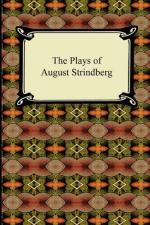|
This section contains 3,963 words (approx. 14 pages at 300 words per page) |

|
SOURCE: Bark, Richard. “Strindberg's Dream Play Technique.” In Strindberg's Dramaturgy, edited by Göran Stockenström, pp. 98-106. Minneapolis: University of Minnesota Press, 1988.
In the following essay, Bart explores Strindberg's use of the “dream play” technique.
When Strindberg wrote his preface to A Dream Play, he called To Damascus (I) “his former dream play.” So in a sense the author has given his approval for us to call these two plays—and perhaps others, such as The Ghost Sonata—“dream plays,” bearing in mind that although they are different in character and technique, there are more things that unite them than separate them—above all a basic view of reality.
When To Damascus (I), A Dream Play, and The Ghost Sonata were first published, the critics discovered their “dream atmosphere.” Ever since then, scholars, professionals in the theater, readers, and spectators have tried to ascertain how Strindberg created...
|
This section contains 3,963 words (approx. 14 pages at 300 words per page) |

|


